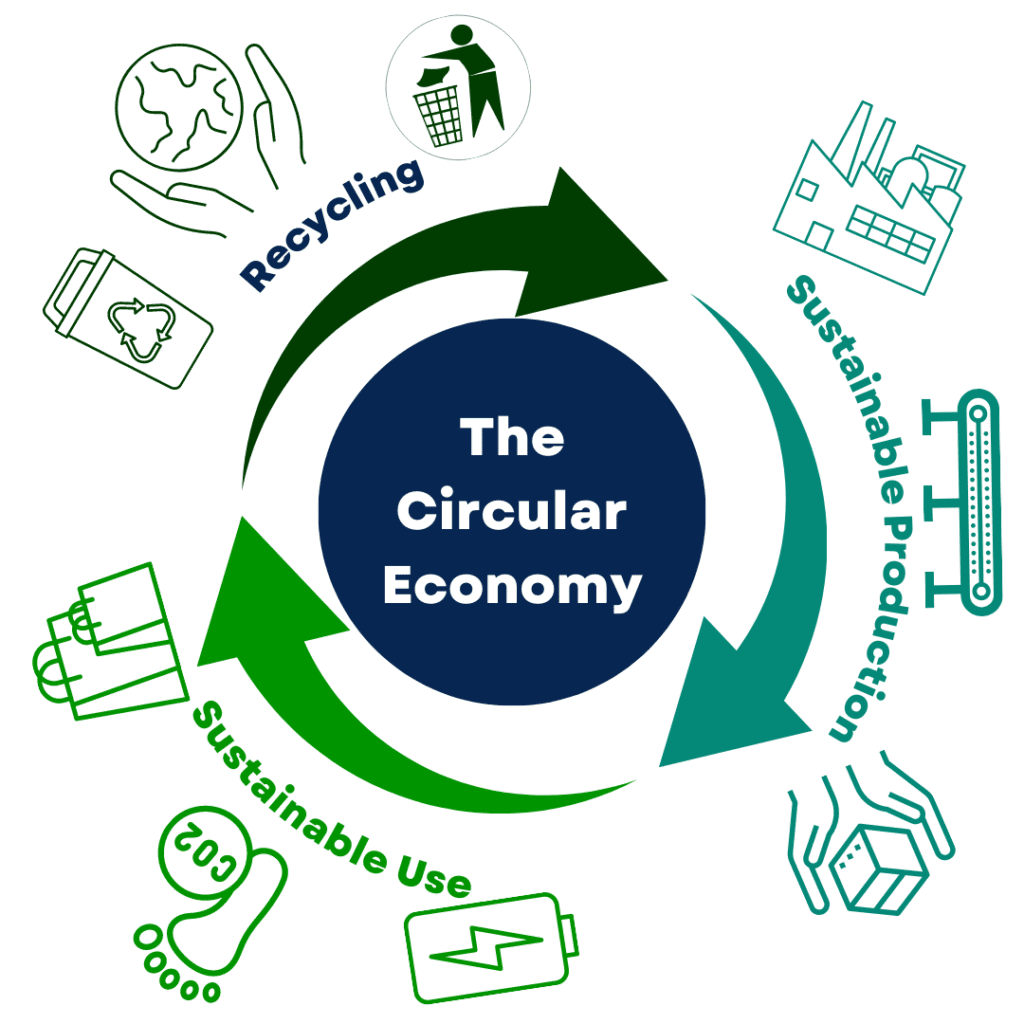The circular economy is not a simple concept. Yet, it is not as complicated as some might think. To understand the circular economy you need to know three things:
- It is more than reducing, reusing, and recycling.
- You need to rethink the concept of waste so that waste becomes obsolete.
- We need to create products with eternal (not just long-lasting) life.
So, let’s break each of them down.
More Than Three Rs
Many of us wrongly think that the circular economy is just reducing, reusing, and recycling. However, while this forms the basis of the circular economy, we need to consider even more Rs. Unfortunately, you cannot capture the circular economy in a three-world slogan.
Recycling encourages us to give new life to an ageing product. However, the circular economy focuses on the life cycle of production over the lifeline of a singular product. Think regeneration and recreation over generation and creation. Nothing will be entirely new.
We need to redesign products so that they cannot be wasted. In a circular economy, products are designed to function like renewable resources. They can be remade, repaired, refurbished, or repaired.
Rethink Waste
In a circular economy, we don’t just reduce how much we waste, we make waste obsolete.
Whereas, in a linear economy, a product has a linear life. We make a product, use a product, and then waste a product. At the moment, we go through resources fast, but what we need to do is make resources that last.
The circular economy deconstructs this line of thought. It does not have a beginning, a middle, or an end. Instead, it has a continuous life cycle.
At its core, the circular economy comes down to three concepts:
- Recycling
- Sustainable Production
- Sustainable Use
To best understand these concepts in practice, you need to view the circular economy in a graphic.
This helps illustrate that while the process happened in order, you can enter the cycle at any of the three stages. The circle infinitely rotates and the process never concludes.
Long and Slow
Supporting the circular economy is playing the long game. In fact, it playing a never-ending game. Imagine if the goal of Monopoly was to create a sustainable business with eternal life rather than to make the most money. This would make a typically long game last forever. Keep this idea in mind when you are thinking of the circular economy.
The circular economy is not focused on the short term, it encourages us to provide for ourselves (and our descendants) forever. If we don’t want the world to end, we need to act like it won’t. Instead, of buying a singular product with a limited life, you need to nurture the production line to provide you with a lifetime of produce.
To find out more about how we support the circular economy, click here to read about our re-refinery.





